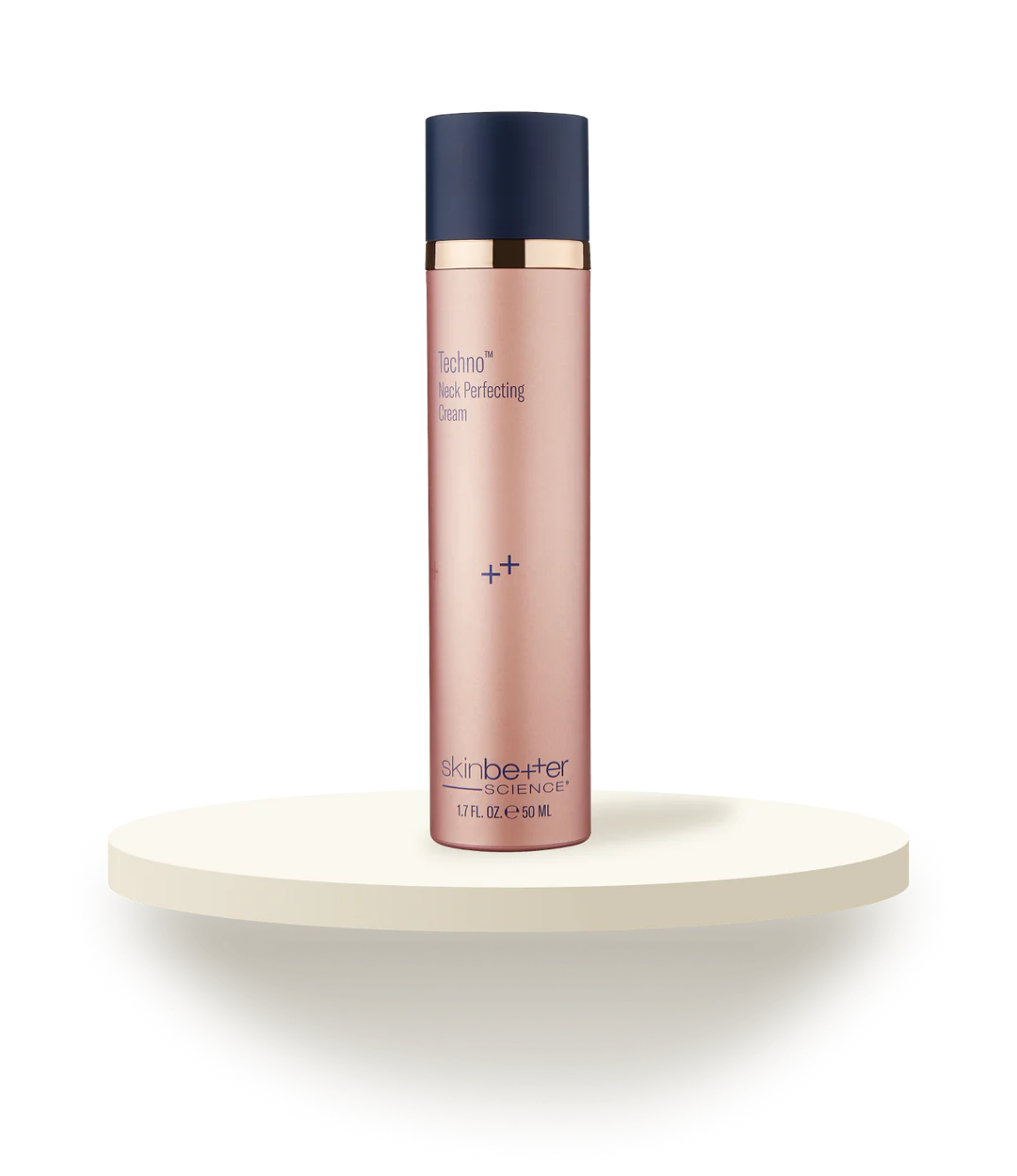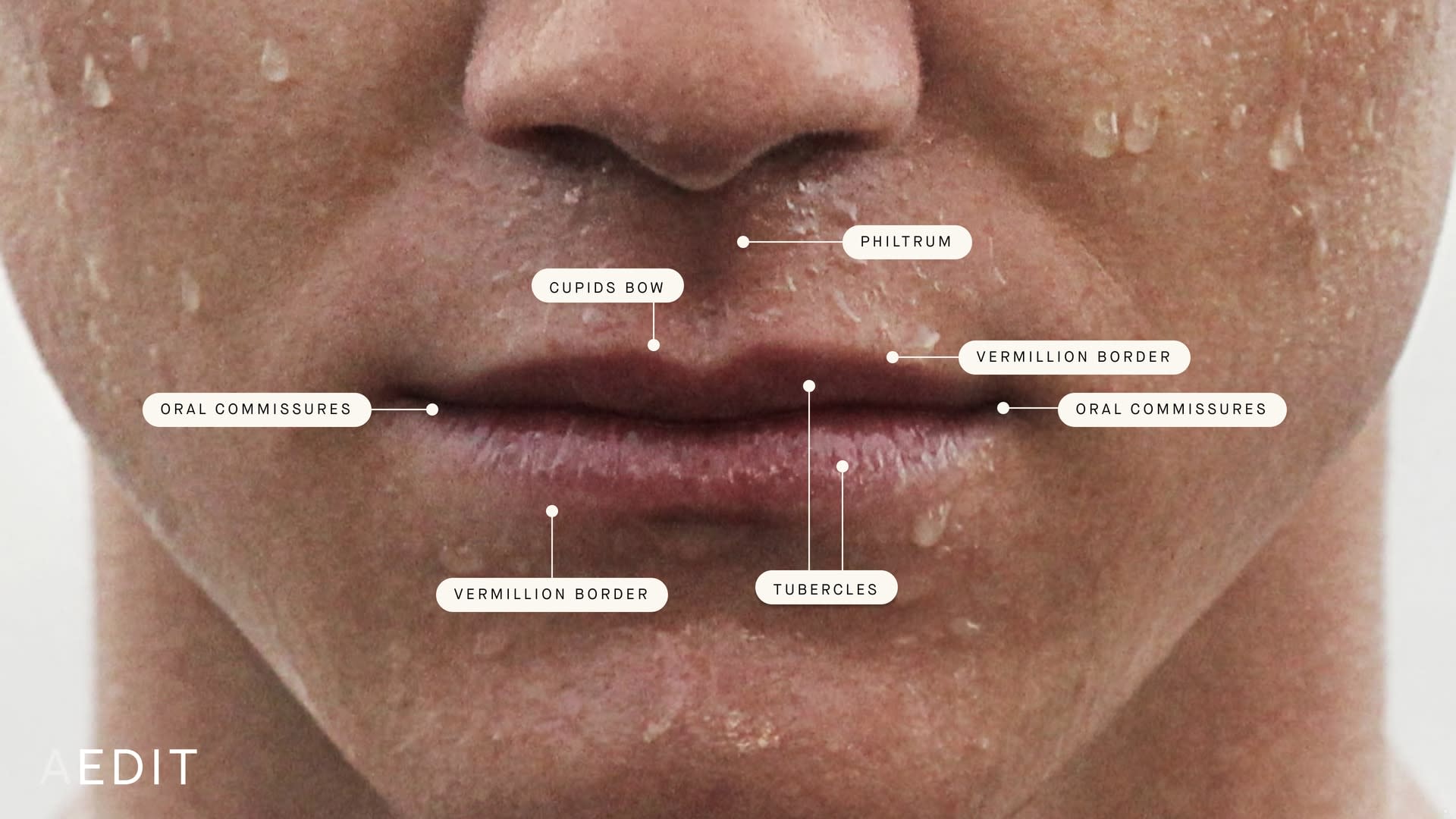Lip Shape
We all weren't blessed with Angelina Jolie's proportional, plush pout. Cosmetic concerns like uneven, drooping, or poorly defined lips can occur as a result of genetics or aging.
In many ways, our lips act as a gateway to the world around us. Eating, drinking, speaking, and expressing emotion require repeated and complex adjustments to lip shape. With this in mind, it is no wonder our lips are one of the most prominent features of the face.
Abnormalities of lip shape — like an uneven pout, drooping, or undefined cupid’s bow — can be the result of genetics (thank your mom and dad for that one), environmental factors (think: smoking, UV exposure, and even an affinity for drinking through a straw), and/or aging and can lead to cosmetic concerns and certain medical conditions.
On the aesthetic front, a study by the American Society of Plastic Surgeons (ASPS) found a 66 percent increase in plastic surgery lip procedures between 2000 to 2018, which has led to significant advancement in procedures like lip injections, lifts, implants, and micropigmentation that have the ability to refine and perfect lip shape.
There is much more to the shape of the pout than just the top lip and bottom lip. The lip itself is composed of an outer layer of cells (containing hair, oil, and sweat glands), the highly sensitive red or pink area known as the vermillion, and the inner mucosal membrane. The red or pink part of the lips is separated from the skin around the mouth by a white roll known as the vermillion border, and the areas where the upper and lower lips meet are called the oral commissures. The central area of the upper lip, meanwhile, is referred to as the cupid’s bow.
The Anatomy of the Lip
Lip lifts, injections, and pigmenting procedures exist to augment the natural shape and definition of the upper lip, lower lip, and surrounding area. (1)
Genetics, of course, determine the general appearance of the lips from birth. A quick glance around at your family, friends, and colleagues will reveal the incredible diversity of different lip shapes. Not to be confused with lip size concerns like thin lips (read our guide lip size), the shape of your lips is influenced by the curve, height, angle, and proportion of the upper and lower lips.
As we age, a multitude of natural processes cause a distinct change in lip shape. Generally, the upper lip lengthens and inverts, the lower lip thins, the corners of the mouth droop, and the curves of the lips diminish. These changes are related to the natural evolution of bone structure (especially in the jaw), dental atrophy, and collagen loss.
Premature lip aging can be caused by UV exposure (yes, an SPF-infused lip balm should be a part of your skincare/makeup routine), smoking, and even the pursing that occurs while drinking from a straw, so it is important to care for the lip and mouth area just as you would any other part of your face.
As it relates to the shape of the lip, there are three distinct concerns that someone may experience as a result of their natural lip shape, aging, or trauma (2).
Lip lifts, injections, and pigmenting procedures exist to augment the natural shape and definition of the upper lip, lower lip, and surrounding area.
When considering enhancements to lip shape, it is reasonable to distinguish between cosmetic enhancements to complement existing facial structure and improve the natural lip line versus procedures to correct acquired or age-related variations (think: loss of structure and definition or deformities from injury or scarring).
Fortunately, the treatment options for both are quite similar, and there are a host of surgical and non-surgical solutions that can effectively address both innate and acquired lip shape concerns. For a deeper dive into the treatments below, see our full guide to Lip Shaping Solutions.
There are both surgical and non-surgical treatments for people who wish to turn that frown upside down. Injecting botulinum toxin type A products, like Botox®, Dysport®, Jeuveau®, and Xeomin®, into the surrounding musculature can lift the corners of the mouth, with results lasting three to four months. For a longer term solution, a corner lip lift can be utilized to correct the downturning of the lip at the oral commissures. Small portions of the skin are excised, so new edges can be sutured.
Whether someone is lacking definition on their upper lip, lower lip, or both, lip lifts, fillers, and micropigmentation can all be used to optimize the lip shape. Surgical lip lifts reshape the pout by modifying the space between the lips and nostrils, resulting in youthful, fuller lips. Upper lip-defining procedures include the Italian, modified, and subnasal (a.k.a bullhorn) lip lift, while a more invasive gullwing lip lift can be used to reshape the lower lip as well.
For a non-surgical solution, lip liner can be used to define the lip line or lip filler (temporary, semi-permanent, and permanent) can be injected along the vermillion border. Additionally, micropigmentation can be used to tattoo a more defined lip line and more dramatic lip color.
If you desire a more symmetrical appearance to your lips, there are temporary, semi-permanent, and permanent solutions. Minimally invasive hyaluronic acid-based lip fillers, like Juvederm® and Restylane®, can be used to improve lip volume and vertical lip lines for six months to a year, while more permanent solutions, like Bellafill®, offer long term results. For those looking for a natural alternative, autologen and fat transfer injections involve adding fullness to the lips with patient-derived collagen or fat cells.
Lip implants, meanwhile, are a more invasive procedure that involves placing a mold into the lips for permanent reshaping. For patients who wish to combine a lip implant with a facelift, excess tissue from the face's superficial musculoaponeurotic system (SMAS) can be removed, shaped, and positioned in the lips for added volume.
To create the illusion of a more even pout, lip liner can be used to temporarily draw a new lip line. Similarly, micropigmentation (i.e. cosmetic tattoos) can enhance lip color, shape, and definition on a semi-permanent basis.

